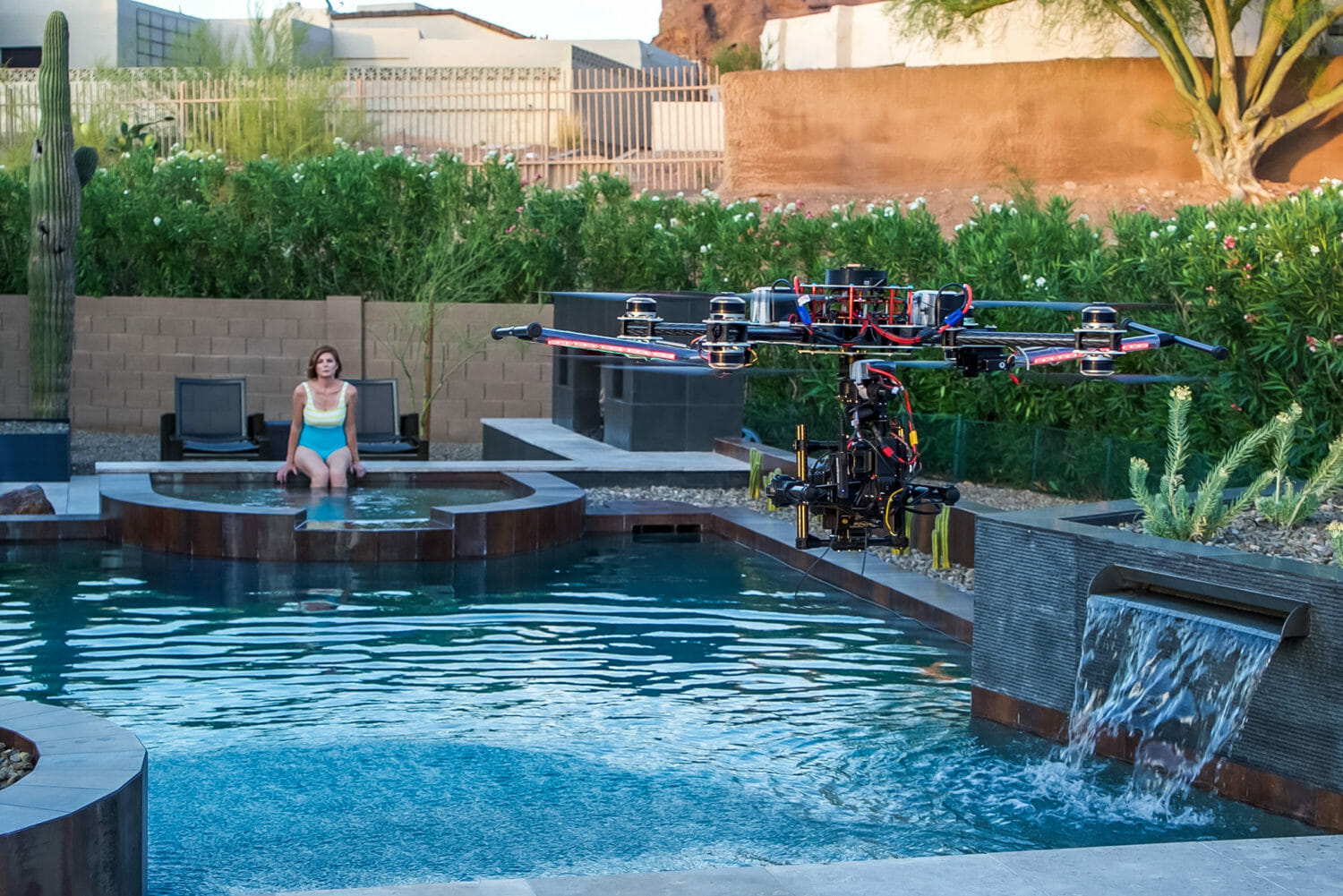Aerial Cinematography And All The Places You Can’t Fly
It’s a bird! It’s a plane! It’s a… Drone? Yes, they’ve taken over our lives completely the past 6 to 7 years or so. Whether you like it or not, they’re here to stay.
Yeah, they’ve got consumer ones for your kids and people over 40 still playing video games. But they’ve got tricked out ones for the food industry that’ll deliver your meal to you. The military has probably been using the tech the longest and the ones they own are rarely seen and off spying on an enemy somewhere or delivering a payload.
One industry that’s fully embraced the technology is the Film & TV community. No longer do producers have to drop tons of money on renting helicopters and risking the lives of their camera operators. There’s a much more affordable and safe option available now.
And they’ve got all kinds. One’s small enough to get in tight spaces with a built-in camera and one’s big enough to hold a fully rigged cinema camera with robust PL lenses. Granted, the less weight you put on them, the more battery life you’ll have so you’ll want to go barebones and choose a lens option that’s lighter weight.
But whatever the drone type, all drone operators find themselves in a pickle when they’re caught flying in spaces that they shouldn’t be.
We’re going to explore the places where you can and cannot fly and drop a little dose of education on you.
Here we go!
National forests/parks
Ah the great outdoors. Reminds me of old’ smokey the bear. Those were the good times weren’t they? Packing up the family car or truck, trekking off into the middle of nowhere and soaking up that fresh air. Whether you did this as a kid or not is irrelevant, what is relevant is the isolation that the vast land provides. Out there you’d think you have all the room in the world to just pull out your drone, snap some quick footage really quick and continue on.
Well, you could, but technically you’d be breaking the law.
Even if you’re out in the middle of nowhere and you’re entirely secluded, you still need a permit if you’re in any national forest or park. The permit isn’t hard to acquire, just go to the government site for whichever state you’re in and navigate yourself to the national parks & forest services section of the site, there, you’ll find a portal for permits. Click on that link and the site will likely walk you through the process.
Another useful site with plenty of information on rules and regulations is uavcoach.com.
Airports
This one’s kind of a no brainer right? Any drone operator that’s near an airport would assume (I hope) that they’re not allowed to fly in or around that airspace and that they might impede the safety of air traffic. But some operators may not know the exact details of that regulation. And not knowing could land you in some hot water if you get caught where you shouldn’t be.
So here it is! You’re restricted from flying anywhere within five miles of an airport unless it’s class g airspace, but you’ll need special permission from the FFA to do so. Go to www.faa.gov and follow the steps to attain that permission if you find yourself in that situation.
Just a little dose of info — Class G airspace in the US extends up to 14,500′ Mesa Sea Level. At and above this altitude is Class E, excluding the airspace less than 1500′ above the terrain and certain special use airspace areas.
Class E airspace is controlled airspace (ATC has jurisdiction within it) whereas Class G is the only uncontrolled airspace (ATC has no jurisdiction here).

Public Streets or Freeways
Now this one probably gets the most violations of them all. Mostly by uneducated consumers who think their tiny drone isn’t bothering anybody. We’ve all seen the footage of people taking aim with rocks, baseballs, you name it — to take down a drone that they feel is invading their sacred space. So apparently drones are bothering some people. But are these people justified in feeling slighted for this invasion of privacy? — Well if they’re walking down a public street or driving in their car, they are justified.
As it turns out, anything over public streets or freeways — yep you guessed it, it needs a permit. Again like the national parks and forests, you’ll find all the information you need on your state’s government website.

Where you can fly
Well, that property line outlining your property where you have permission to fly. That’s where you can throw down your landing mat and take flight. The second you go over into your neighbor’s property and you don’t have permission, that’s a violation that can escalate if your neighbors aren’t particularly fond of you.
If it’s a private residence or property, you have to get permission from the property owners or someone with the authority to make decisions on their behalf if you want to fly there.
If it’s not a public street, park, freeway, forest, it’s probably privately owned land, so most places you go, you’re going to need permission or a permit, that’s the way it is and if you think about it, that’s not that bad. It’s like fishing or other recreational sports. The permits are easy to acquire and keep things organized and compliant. They’re able to avoid catastrophe by setting in place these rules and regulations.
Have you ever been up close to one of these drones? You don’t watch what you’re doing with careful consideration; you could be missing a finger easily. Those blades are no joke and they could do damage in the hands of reckless operators.

So to all hobbyists and professionals everywhere, stay safe, stay compliant, and have some fun while you’re at it.


